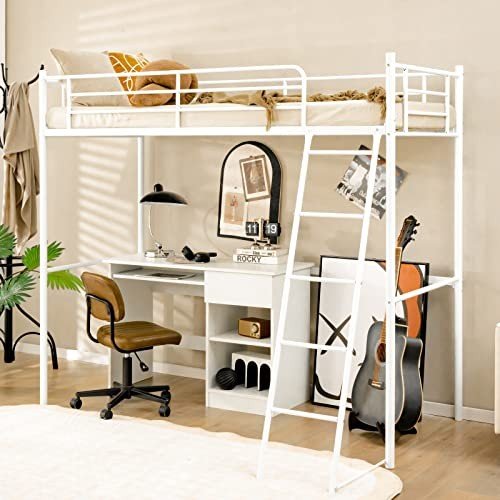bunk_beds_for_adults6824
About bunk_beds_for_adults6824
The Reasons Why Bunk Beds House Will Be The Hottest Topic In 2024
The Comprehensive Guide to Bunk Beds House: Maximizing Space and Functionality
Bunk beds are becoming significantly popular in contemporary households, especially for those residing in restricted space. Whether in a child’s bed room, a visitor space, and even a villa, bunk beds provide an innovative service for taking full advantage of space while likewise accommodating multiple sleepers. This article dives into the numerous elements of bunk Beds Bunk Beds, their design alternatives, advantages, and considerations for maintenance to assist anyone considering a bunk bed purchase make an informed choice.
Comprehending Bunk Beds
Bunk beds are a type of bed that features one bed stacked on top of another, typically secured by a ladder or integrated stairs. They are typically made from wood or metal, with designs varying from traditional to contemporary. Bunk beds are most typically used in kids’s rooms, guest accommodations, and summertime camps, however they can also be a great addition to studio apartments or homes.
Types of Bunk Beds
Comprehending the varieties of bunk beds can help one pick the right design for one’s needs. Here are the typical types:
| Type | Description | Pros | Cons |
|---|---|---|---|
| Requirement Bunk | Two beds stacked on top of each other | Space-saving, timeless design | Limited sleeping capability for adults |
| Loft Bed | A bed raised with open space underneath for a work space or play location | Provides additional functional space | Not perfect for more youthful children |
| Futon Bunk | A bed on top, often with a futon on the bottom | Versatile for sleeping and seating | Less stability compared to traditional bunks |
| L-Shaped Bunk | Two beds organized in an L-shape, often with storage choices | Distinct design, can fit in corners | Uses up more space than standard bunk beds |
| Triple Bunk | Three beds set up vertically or in an unique setup | Optimizes sleeping space | Higher threat of accidents, more complex to make |
Advantages of Bunk Beds
Bunk beds offer many benefits, making them a practical furnishings choice for numerous living spaces. The benefits include:
- Space Efficiency: Perfect for small spaces, they enable more flooring space, making it much easier to walk around.
- Dual Functionality: Especially in the case of loft-style beds, the space below can be utilized for a research study area, a play zone, or additional storage.
- Social Interaction: Bunk beds develop a sense of camaraderie amongst brother or sisters or roomies, promoting sharing and bonding.
- Cost-Effective Sleeping Solution: They supply a budget friendly method to accommodate numerous guests without the requirement to invest in extra separate beds.
- Design Variety: With alternatives ranging from streamlined modern-day designs to traditional wooden structures, there is a bunk bed style to match any design.
Important Considerations for Bunk Beds
While bunk beds use several benefits, there are certain factors to consider to bear in mind to guarantee security and longevity:
- Weight Capacity: Always examine the weight limit of the bunk bed to prevent accidents. Many standard bunk beds have weight capacities between 200-400 pounds.
- Material Quality: Opt for long lasting materials such as solid wood or top-quality metal to guarantee stability and longevity.
- Safety Features: Look for models with guard rails on the leading bunk and wide ladders. Ensure that the bed feet are stable and secure.
- Age Appropriateness: Young children ought to not sleep in the leading bunk, as the threat of falling is considerably increased.
- Assembly: Some bunk beds can be complicated to put together. Make sure that good guidelines are readily available, or think about professional assembly.
Maintenance of Bunk Beds
Correct maintenance of bunk beds is essential for ensuring their comfort and security. Here are some ideas for maintenance:
- Regular Inspections: Periodically check the stability of the bed, making sure all screws and parts are tight and secure.
- Cleaning up: Dust the furniture frequently and clean any spills instantly to preserve the stability and look of the beds.
- Bed mattress Care: Rotate mattresses occasionally to avoid wear and drooping. Think about hypoallergenic mattress protectors for included comfort and cleanliness.
- Readjust if Moved: If the bed is transferred, readjust all parts to make sure continued security and stability.
Frequently Asked Questions about Bunk Beds
Q1: Are bunk beds safe for children?A1: Yes, as long as security standards are abided by. Make sure the top bunk has guardrails, which kids are old adequate and responsible enough to safely use the top bunk. Q2: How much weight can a bunk

bed support?A2: Most bunk beds support between 200 to 400 pounds per bed
, however this can vary by design. Constantly refer to the maker’s specs. Q3: Can adults sleep in bunk beds?A3: Yes, numerous modern-day bunk beds are
developed to accommodate adults, particularly those with reinforced frames. Q4: Do bunk beds require unique mattresses?A4: Not always. Standard bed mattress can be utilized as long as they fit the
dimensions supplied by the maker. Nevertheless,
think about using thinner bed mattress for the leading bunk to ensure security clearance. Q5: How can I maximize space in a room with bunk beds?A5: Use the area underneath for storage or desks, and think about integrating vertical storage
options to keep the space uncluttered. Bunk beds offer an exceptional solution for maximizing space in a home while offering a stylish and practical sleeping plan. Whether for a kid’s room, a visitor space, or a trip house, they are a versatile choice that can accommodate different requirements. By thinking about types, benefits, and correct maintenance, people can make educated decisions, guaranteeing security and durability in their bunk bed investment. With cautious choice, bunk beds can boost both comfort and visual appeal in any space.
No listing found.